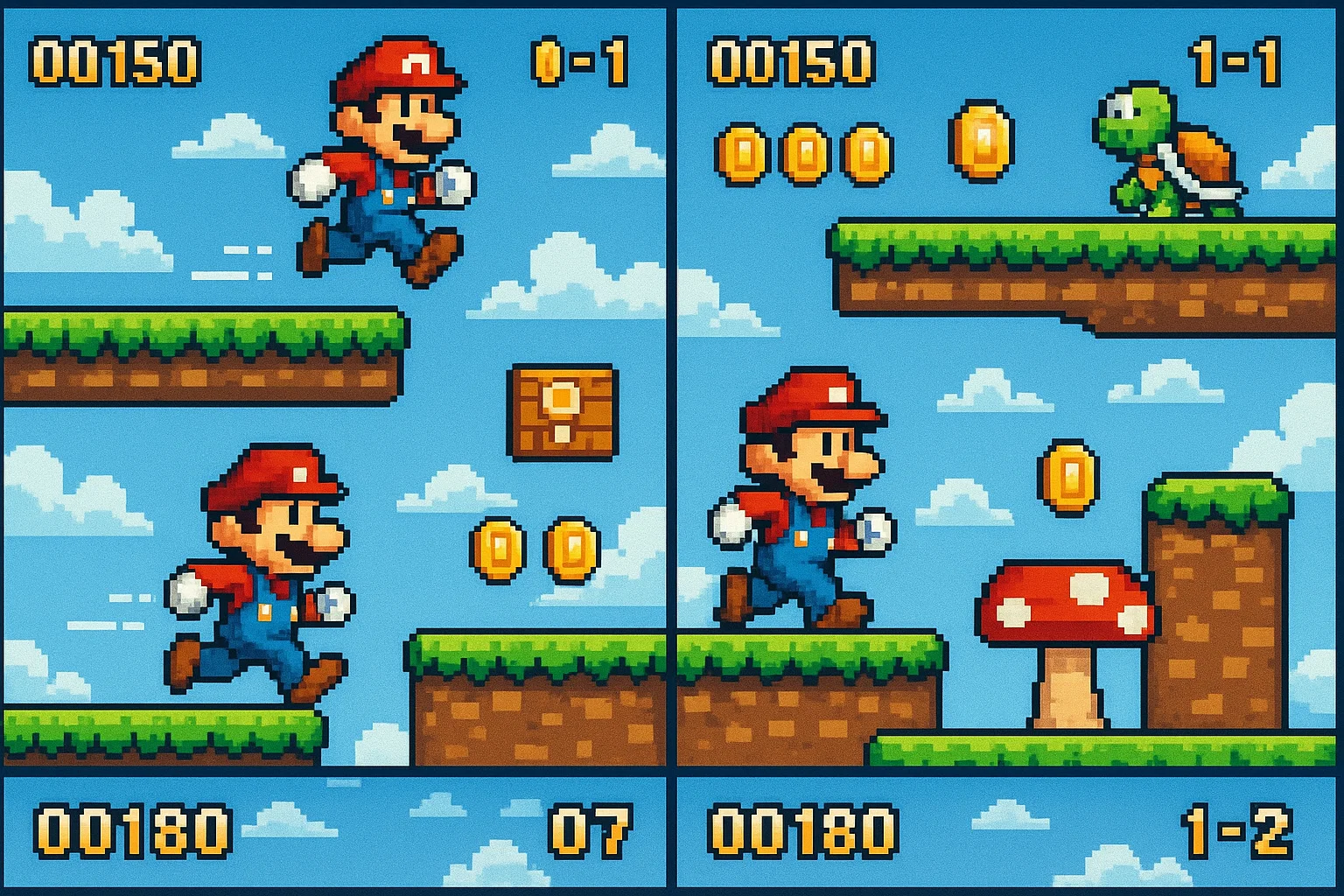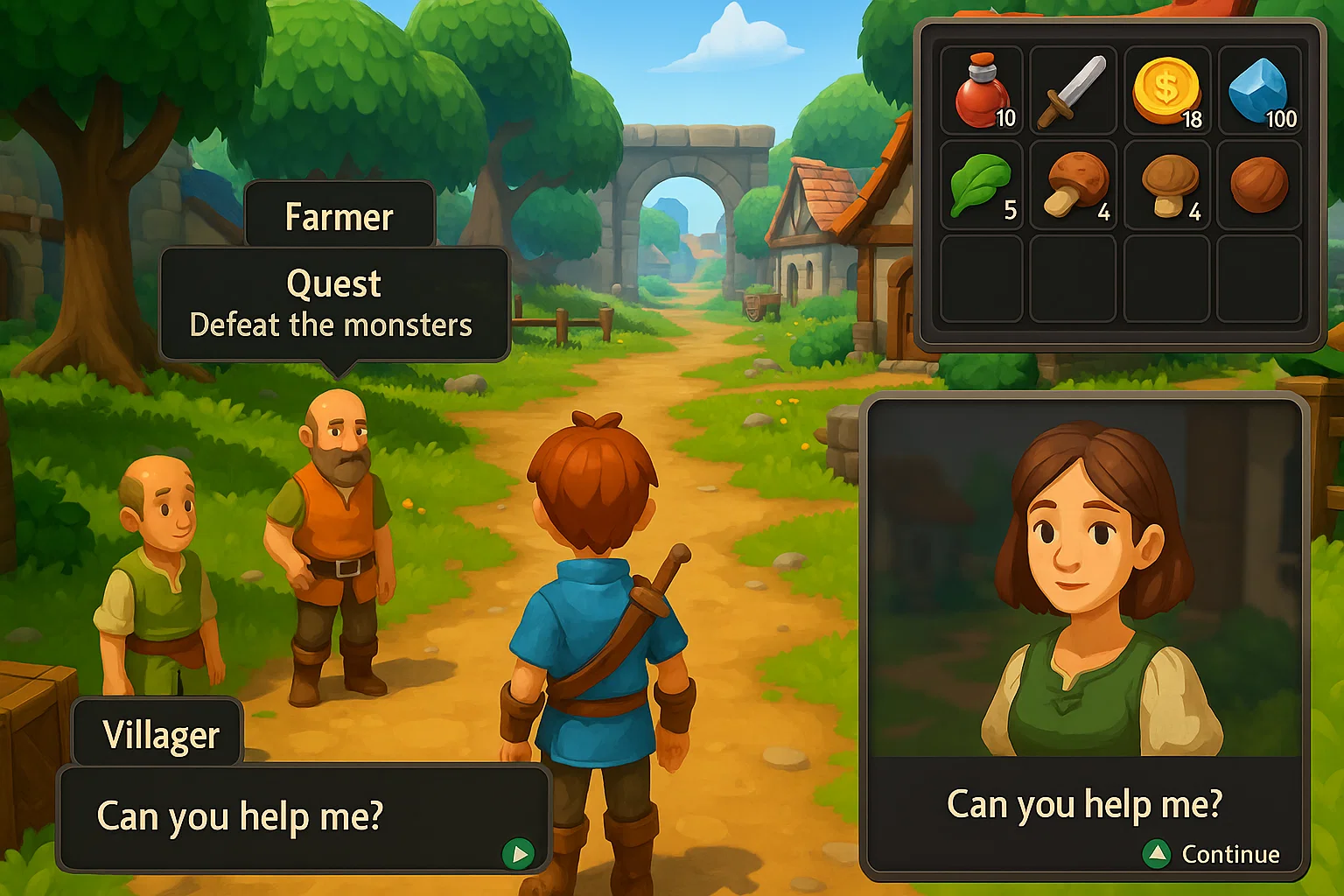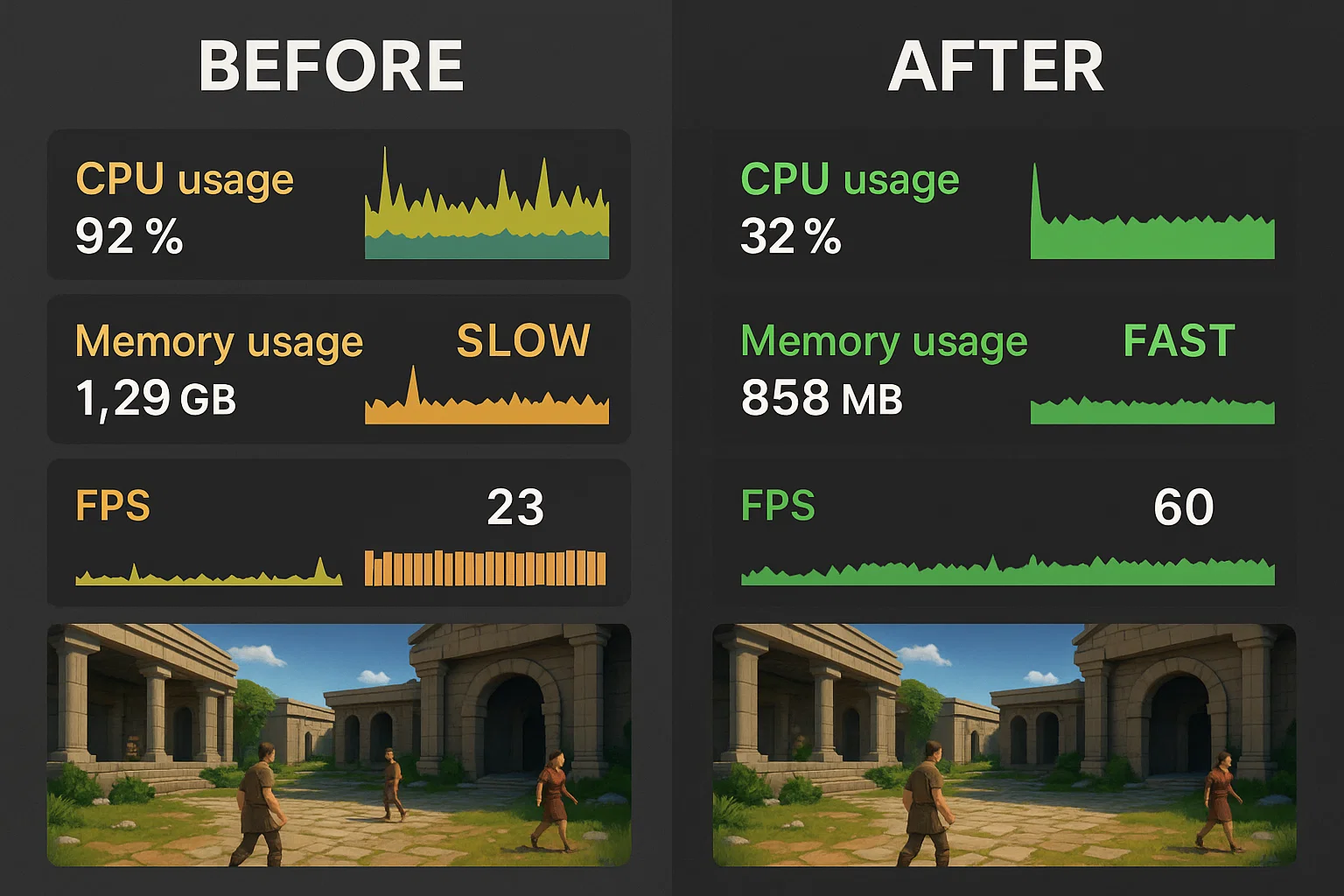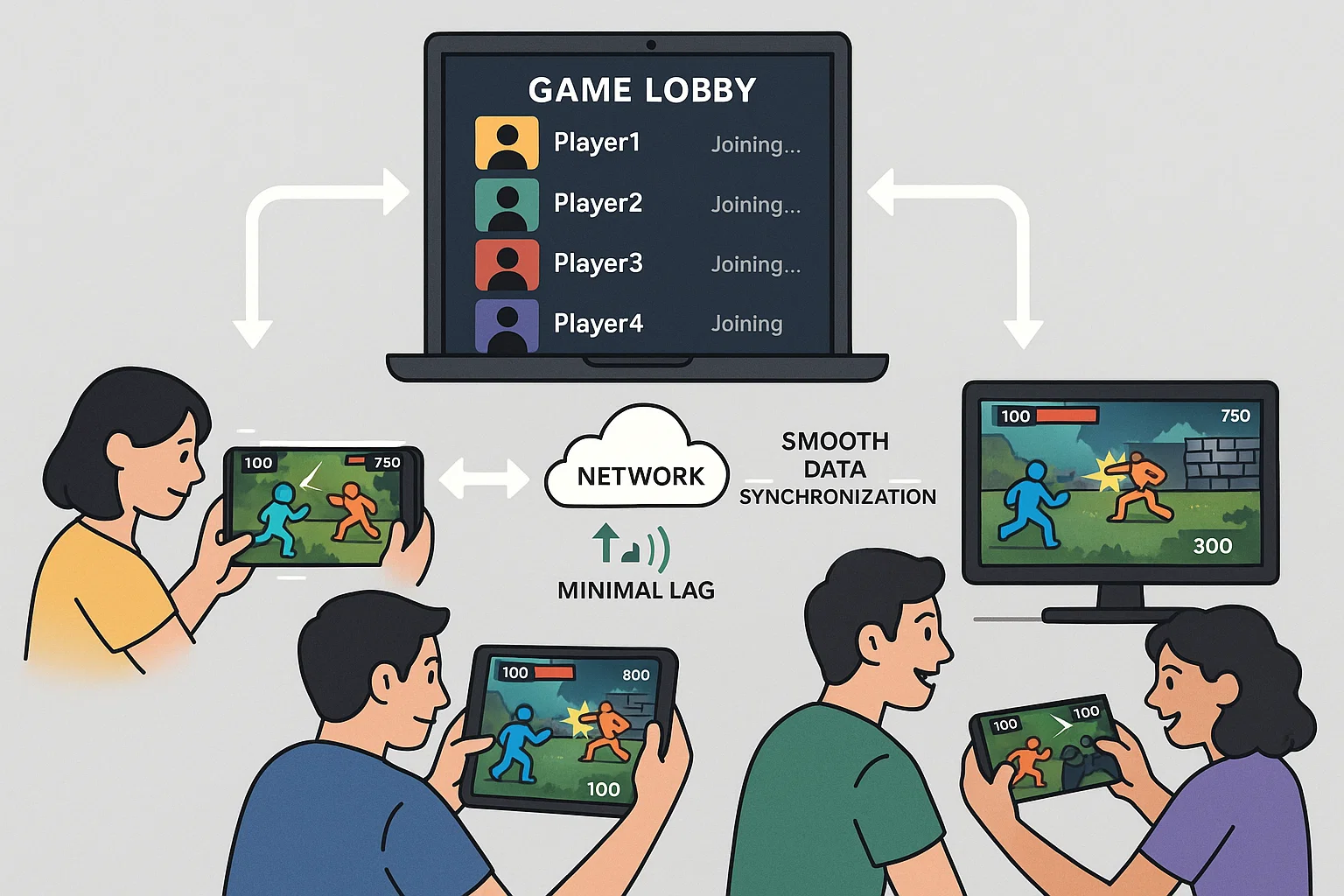Expert Assignment Solutions with 100% Guaranteed Success
Get Guaranteed success with our Top Notch Qualified Team ! Our Experts provide clear, step-by-step solutions and personalized tutoring to make sure you pass every course with good grades. We’re here for you 24/7, making sure you get desired results !
We Are The Most Trusted
Helping Students Ace Their Assignments & Exams with 100% Guaranteed Results
Featured Assignments

2D Platformer Game Development
Game Development - 2D PlatformerClient Requirements
The student needed to create a 2D platformer game where the player can move, jump, and interact with various obstacles. The game should include enemy AI, collectible items, and multiple levels. The student was required to implement a collision detection system, a scoring mechanism based on collectibles, and a level progression system. The goal was to create a polished game loop with smooth gameplay and simple but engaging mechanics.
Challenges Faced
We ensured the students had a good grasp of game mechanics, but they faced complications with collision detection and managing multiple game states. Many students found it difficult to create AI that was challenging but fair. Balancing the difficulty of each level and ensuring smooth performance across different platforms also proved tricky, as some students had trouble optimizing their games to avoid performance issues like frame rate drops.
Our Solution
We provided students with resources to help them understand collision detection algorithms and game physics. We guided them through the process of using a game engine like Unity or Godot to implement basic player movement, jumping mechanics, and enemy AI. Additionally, we taught them how to structure levels, integrate collectible items, and manage transitions between levels. We also focused on optimizing performance and handling varying screen sizes and devices.
Results Achieved
The students successfully developed functional 2D platformer games with a smooth, engaging user experience. They implemented AI that provided appropriate challenge levels, managed multiple levels of gameplay, and ensured that their games performed well across platforms. Their final games demonstrated a strong understanding of the core principles of game development.
Client Review
My experience working on this assignment was very enriching. Creating a 2D platformer really helped me understand the complexity of game mechanics, especially collision detection and level progression. The step-by-step support provided helped me tackle challenging areas like AI and performance optimization. By the end of the project, I had developed a game that I’m proud of, and it gave me a solid foundation in game development.

3D Adventure Game with Interactive NPCs
Game Development - 3D AdventureClient Requirements
The student wanted to design a 3D adventure game where players could explore an open world, interact with NPCs (non-playable characters), and complete quests. The game needed to feature an inventory system for the player, and NPCs should be able to give quests, engage in dialogues, and offer rewards. The student was tasked with implementing AI for NPC behaviors, developing a basic quest system, and ensuring the game world was immersive and responsive.
Challenges Faced
We faced some complications with managing a 3D environment, as some students struggled to design and implement a fluid navigation system for the player. Many had trouble designing NPC AI that felt natural and creating a believable world where quests advanced as intended. Additionally, handling the player's inventory and ensuring seamless integration with the game world, like equipping items or completing quests, presented challenges for some students.
Our Solution
We introduced the students to tools for building 3D worlds, such as Unity’s 3D engine or Unreal Engine. We guided them through designing the player movement and camera system, developing NPC AI using pathfinding algorithms, and creating dialogue systems with branching options. Students also learned how to implement inventory systems and integrate rewards, and they received tutorials on creating a quest system that tracked player progress.
Results Achieved
The students successfully created 3D adventure games where players could explore environments, interact with NPCs, and engage in quests. Many students implemented branching dialogues, side quests, and a working inventory system. The NPC AI was functional, and the overall experience felt immersive and dynamic. The final projects demonstrated solid skills in 3D game design and NPC interaction.
Client Review
This assignment was both challenging and rewarding. Building a 3D world and implementing NPC interactions gave me a deeper understanding of AI and game design. The process of integrating quests and inventory management was tough, but with the support I received, I was able to create a truly immersive game. This project boosted my confidence in 3D game development and I look forward to applying what I learned in future projects.

Game Performance Optimization and Profiling
Game Performance OptimizationClient Requirements
The student needed to optimize the performance of an existing game, focusing on reducing frame drops, optimizing asset loading, and ensuring smooth gameplay on different devices. The student was tasked with identifying performance bottlenecks using profiling tools, optimizing resource usage (e.g., textures, models, and sounds), and implementing techniques like object pooling and level-of-detail (LOD) rendering to enhance performance.
Challenges Faced
We ensured that students understood the complexities of performance optimization, but many faced difficulties when identifying the specific causes of performance issues. Some students struggled with optimizing textures, models, and sound files for faster loading times, while others had issues with memory management, leading to frame rate drops. Profiling and debugging performance issues with complex game environments also posed significant challenges.
Our Solution
We introduced students to game profiling tools available within engines like Unity (Profiler) and Unreal Engine (Stat UnitGraph). Students were taught how to track memory usage, CPU, GPU performance, and how to spot bottlenecks. They learned optimization techniques such as object pooling to minimize unnecessary object creation and how to use LOD to reduce the complexity of distant objects. We also explained how to optimize assets like textures, audio, and 3D models for better performance.
Results Achieved
The students successfully optimized their games, achieving higher frame rates and smoother gameplay. Many were able to reduce loading times and minimize resource usage, improving the overall performance. The final games ran efficiently across different devices, demonstrating the students’ understanding of game performance optimization.
Client Review
This assignment helped me understand how crucial performance is in game development. Profiling the game and identifying performance bottlenecks was a challenging but rewarding task. After optimizing my game, I saw significant improvements in performance and smoothness. The hands-on approach to optimization techniques has given me valuable skills for developing high-performance games.

Multiplayer Game Development with Networking
Multiplayer Game DevelopmentClient Requirements
The student needed to implement a multiplayer feature in a game, enabling two or more players to interact in real-time. The task involved setting up a networking system, including the ability for players to join the same game session, synchronize game states (e.g., player positions, scores, etc.), and handle network latency. The student was also required to implement basic matchmaking and lobby features, allowing players to find and join games.
Challenges Faced
We ensured that students understood the basics of networking for games, but they faced challenges when it came to synchronizing the game state between multiple players. Managing real-time data transmission and handling network latency and packet loss were significant hurdles. Students also struggled with setting up a smooth matchmaking system that allowed players to join each other’s games seamlessly.
Our Solution
We provided resources on networking fundamentals for multiplayer games and introduced networking libraries and solutions such as Photon for Unity or Unreal Engine’s native networking system. Students learned how to implement client-server models, synchronize player positions and actions, and handle network latency with techniques like lag compensation. We also explained how to create a basic matchmaking system and set up dedicated game lobbies.
Results Achieved
The students successfully implemented multiplayer features, enabling real-time player interactions in their games. They demonstrated a solid understanding of network synchronization, latency compensation, and matchmaking. Many students successfully built small-scale multiplayer games that supported smooth player interactions with minimal lag, showing great progress in their networking skills.
Client Review
Working on multiplayer game development was a huge eye-opener. Setting up the networking system and ensuring smooth gameplay across multiple devices was complicated, but with the support I got, I was able to make it work. The experience taught me a lot about client-server architecture and real-time game communication. I now feel much more comfortable with networking in games.
